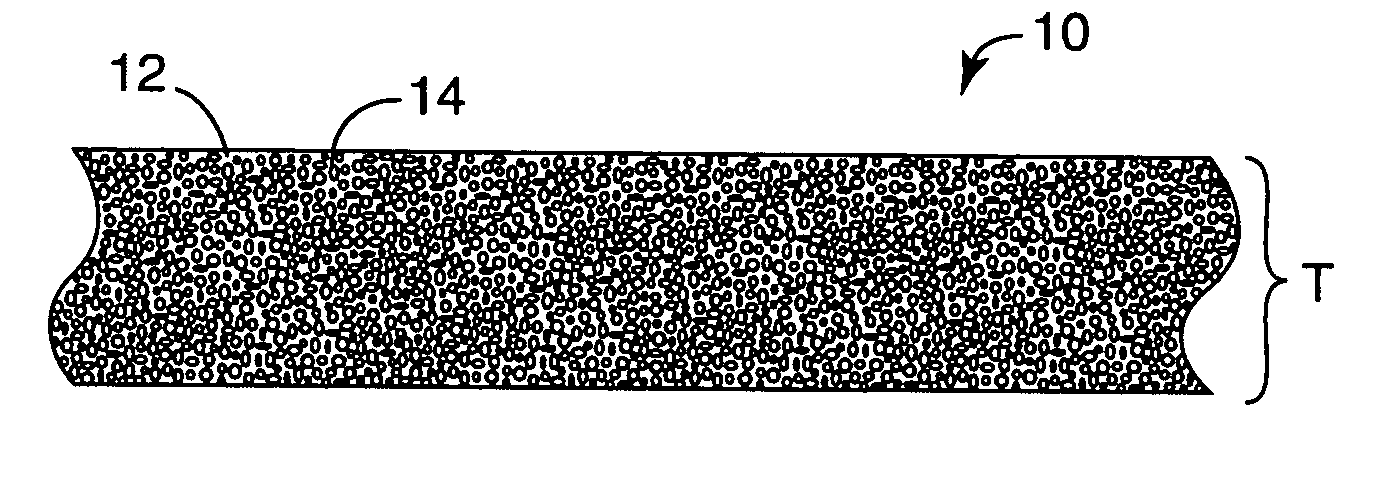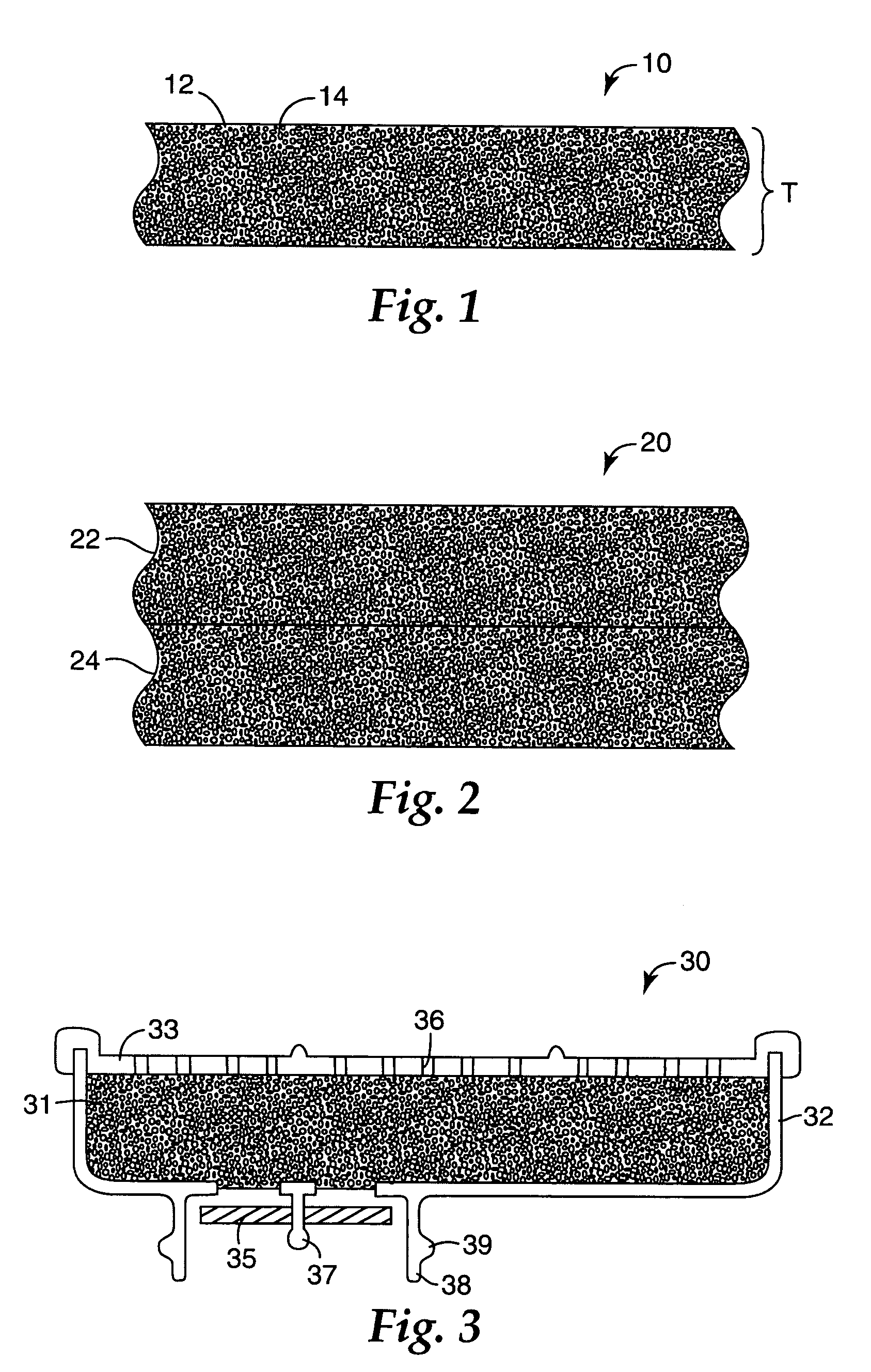Particle-containing fibrous web
a technology of fibrous webs and fibers, which is applied in the field of fiber-containing fiber-containing webs, can solve the problems of difficult to handle the web in a production environment, the cartridge may not contain the web may not be replaced with enough activated carbon to meet the capacity requirements of applicable standards-making bodies, etc., to achieve low carbon shedding tendencies, low pressure drop, and high service life
- Summary
- Abstract
- Description
- Claims
- Application Information
AI Technical Summary
Benefits of technology
Problems solved by technology
Method used
Image
Examples
example 44
[0068] Using the general method of Example 21, a single layer web was made using PS 440-200 thermoplastic polyurethane and 40×140 carbon granules. The completed web contained 0.202 g / cm2 carbon (91 wt. % carbon) and had a 15 micrometer effective fiber diameter. Using the method of U.S. Pat. No. 3,971,373 (Braun) Example 19, an 81 cm2 sample of the Example 46 web containing 16.3 g total carbon was exposed to <35% relative humidity air flowing at 14 L / min and containing 250 ppm toluene vapor. FIG. 9 shows a plot of the downstream toluene concentration for the Example 44 web (Curve B) and a plot of the Braun Example 19 downstream toluene concentration (Curve A). The Braun Example 19 web contained polypropylene fibers and 17.4 g total carbon (89 wt. % carbon). As shown in FIG. 9 it exhibited substantially less adsorption capacity than the Example 44 web, even though the Example 44 web contained less carbon.
example 45
[0069] Using the general method of Example 21, a two layer web was made using PS 440-200 thermoplastic polyurethane, 12×20 carbon granules in the first layer and 40×140 carbon granules in the second layer. The first layer contained 0.154 g / cm2 carbon (91 wt. % carbon) and had a 26 micrometer effective fiber diameter. The second layer contained 0.051 g / cm2 carbon (91 wt. % carbon) and had a 15 micrometer effective fiber diameter. Using the method of U.S. Pat. No. 3,971,373 (Braun) Example 20, an 81 cm2 sample of the Example 45 web containing 16.6 g total carbon was exposed to <35% relative humidity air flowing at 14 L / min and containing 350 ppm toluene vapor. FIG. 10 shows a plot of the downstream toluene concentration for the Example 45 web (Curve B) and a plot of the Braun Example 20 downstream toluene concentration (Curve A). The Braun Example 20 web contained polypropylene fibers and 18.9 g total carbon (85 wt. % carbon). As shown in FIG. 10 it exhibited substantially less adsorp...
PUM
| Property | Measurement | Unit |
|---|---|---|
| weight percent | aaaaa | aaaaa |
| weight percent | aaaaa | aaaaa |
| elongation | aaaaa | aaaaa |
Abstract
Description
Claims
Application Information
 Login to View More
Login to View More - R&D
- Intellectual Property
- Life Sciences
- Materials
- Tech Scout
- Unparalleled Data Quality
- Higher Quality Content
- 60% Fewer Hallucinations
Browse by: Latest US Patents, China's latest patents, Technical Efficacy Thesaurus, Application Domain, Technology Topic, Popular Technical Reports.
© 2025 PatSnap. All rights reserved.Legal|Privacy policy|Modern Slavery Act Transparency Statement|Sitemap|About US| Contact US: help@patsnap.com



